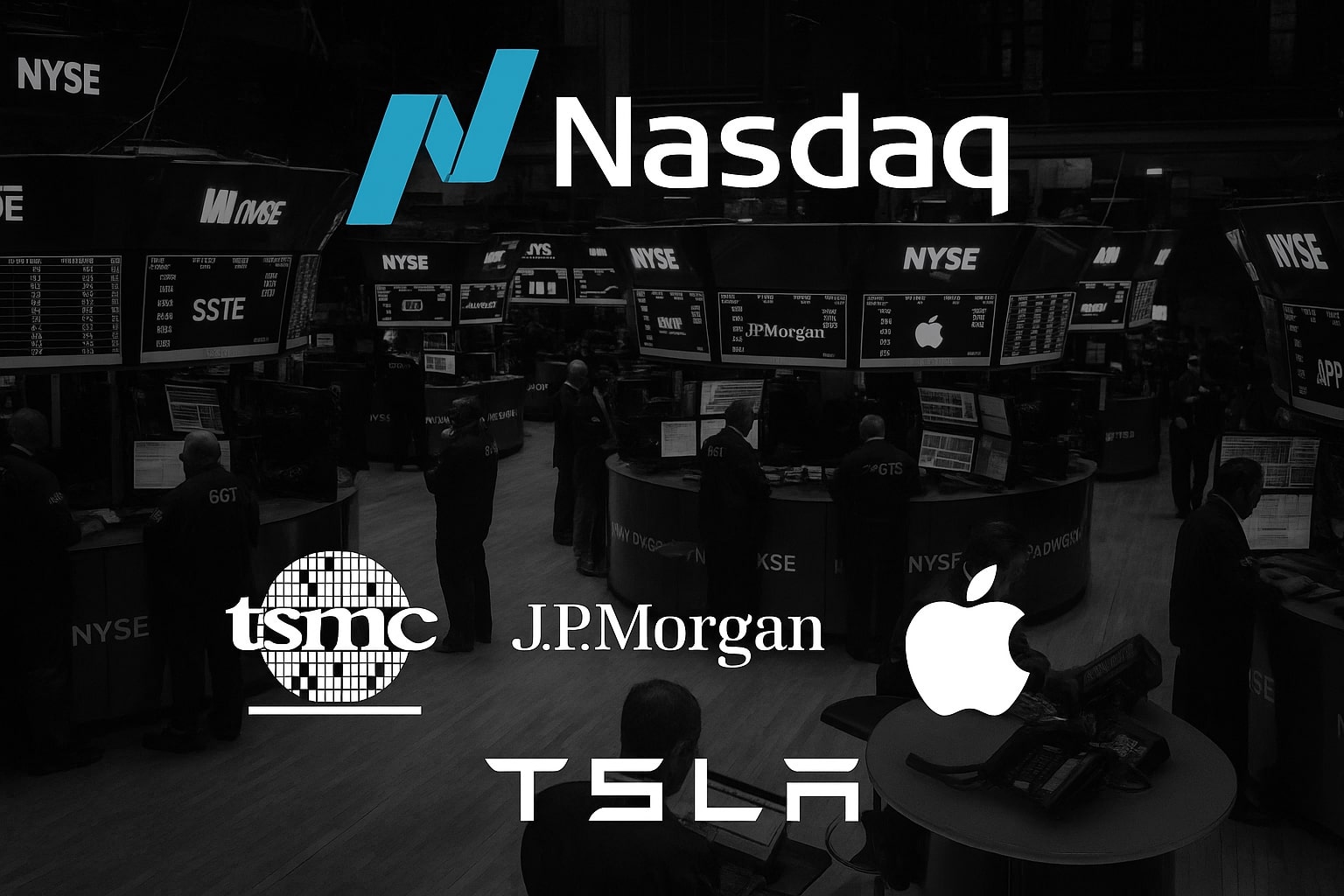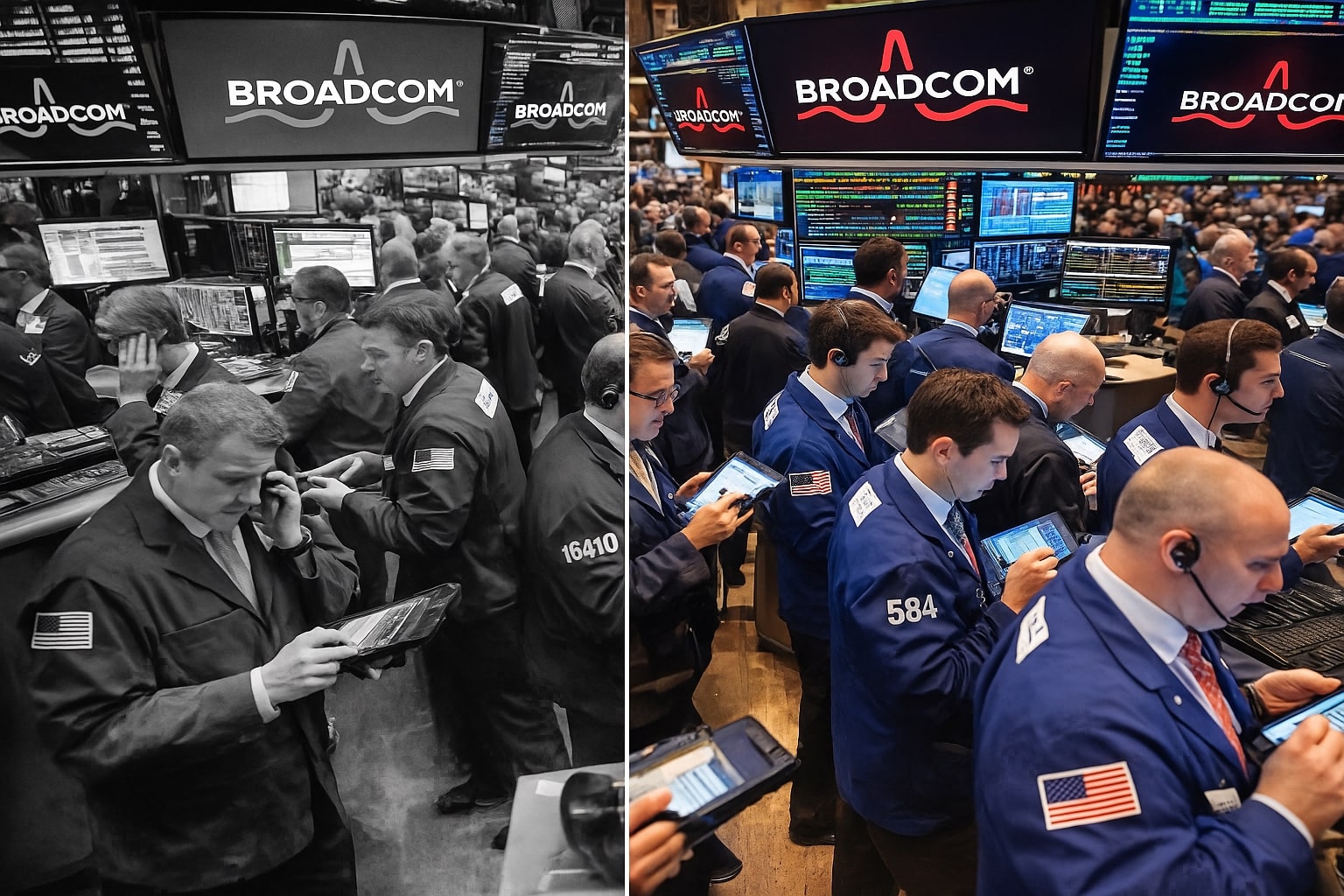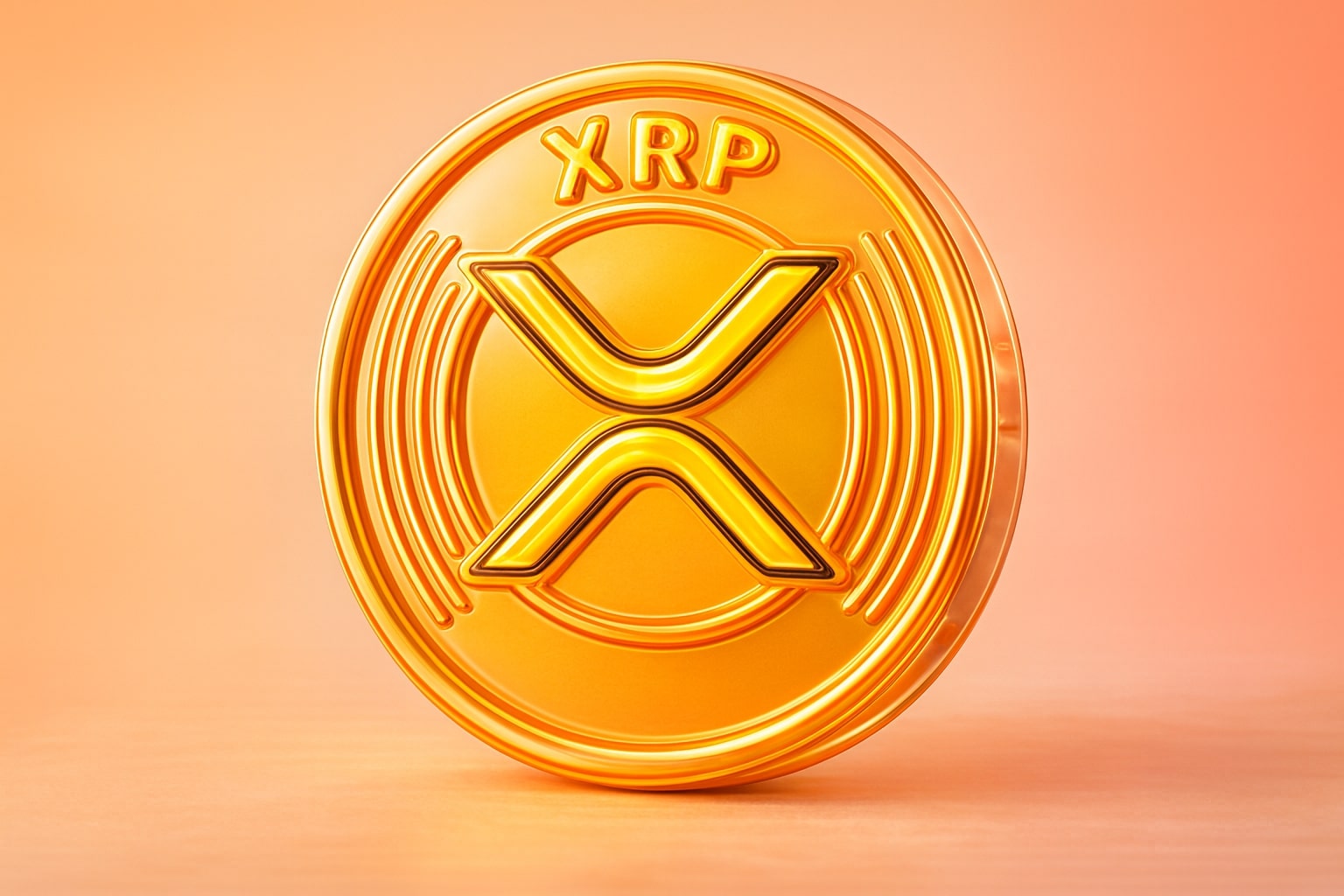Earnings Season Ignites: Tesla and Netflix in Focus
Roughly 58% of S&P 500 companies have reported Q3 results so far, with 86% beating forecasts, pushing aggregate earnings-growth expectations to 9.3% Y/Y. This week brings heavyweights:
• Netflix (NFLX) reports Tuesday, expected EPS ≈ $3.48 on $9.8 B revenue after recent price hikes and ad-tier momentum.
• Tesla (TSLA) follows Wednesday, with analysts eyeing Q3 margin recovery and updates on robotaxi, Optimus robots, and AI training. The stock at $439.83 (+2.6% Friday) has rebounded on anticipation of product catalysts despite delivery shortfalls.
• Intel (INTC) Thursday will reveal progress after U.S. government partnerships and collaboration with Nvidia on AI designs; shares rose 0.47% Friday to $37.02.
• Coca-Cola (KO), Procter & Gamble (PG), GE Aerospace (GE), RTX (RTX), and Blackstone (BX) will provide insight into consumer, industrial, and financial health.
Strong early reports from American Express (AXP) — record revenue, net income surge, and raised guidance — boosted the consumer-finance segment. AXP is trading at an all-time high after beating both EPS and revenue consensus.
Sector Rotation and Narrowing Breadth
Under the surface, market breadth is thinning. Only ~57% of S&P 500 stocks are in uptrends, down from 77% in July, indicating heavy reliance on mega-caps. Strategists warn that narrow leadership increases vulnerability to shocks. Yet rotation into defensives is emerging: utilities gained 1% last week, consumer staples and healthcare outperformed, and AES spiked 17% on takeover rumors. Pharma names rallied ~2.7% after the White House agreed to cap drug prices — supporting Eli Lilly (LLY) and Novo Nordisk (NVO), even after their post-Trump price-control sell-off.
Energy cooled as WTI crude (CL=F) hovered near $57.5 and Brent (BZ=F) around $61.3 — a sharp decline from 2023 levels — easing inflation fears. Gold (XAU/USD) briefly hit a record $4,300/oz before settling near $4,230 as safe-haven demand tapered.
Valuation Pressure and Market Psychology
Warnings are rising that valuations have reached “full” levels. The Buffett Indicator (total market cap / GDP) now stands around 219% — above the 200% “playing with fire” threshold Buffett flagged in 2001. The Shiller CAPE ratio is at its second-highest on record.
Despite this, historical data show equities deliver asymmetric upside: every 31% average bear-market loss has been followed by ~254% average bull-market gain. The math argues the odds still favor long-term bulls — especially in broad indices like SPX and NDX.
However, complacency risk is real. Veteran managers liken the AI rally to “surfing a wave that will eventually crest.” Timing the turn is impossible, but momentum remains powerful as liquidity builds ahead of rate cuts.
Global Equities and Currency Dynamics
The rally is global. The MSCI World ex-USA index is up 25.3% YTD versus the S&P 500’s 14.8%. Japan’s Nikkei 225 trades around 47,600 after breaking 30-year highs, while Europe’s STOXX 600 remains positive despite French budget wrangles and German sluggishness.
Emerging markets have benefited from stable commodities and AI-driven industrial demand — notably Latin America’s miners and Taiwan’s tech suppliers. The U.S. Dollar Index (DXY) eased to 98.4, providing breathing room for non-U.S. assets and corporate earnings translation.
UBS lifted its global-equities rating to “attractive,” arguing that AI productivity and easier monetary policy create a favorable setup. Still, inflation and geopolitics — from Europe’s energy costs to U.S.–China tech restrictions — remain wildcards.
Macro Data and the Week Ahead
The calendar is packed.
• Monday (Oct 20): Leading Indicators (Sep)
• Tuesday: Netflix, GE, Coca-Cola, Philip Morris, RTX, Lockheed Martin, 3M, GM earnings
• Wednesday: Tesla, IBM, AT&T, Lam Research, Thermo Fisher reports
• Thursday: Intel, Honeywell, Blackstone, Newmont, Ford results; Existing-Home Sales release
• Friday: September CPI (critical for Fed decision), plus PMI and consumer sentiment updates
Economists expect CPI to show core inflation slowing below 3.2% Y/Y, reinforcing the case for further rate cuts. Any upside surprise could shake confidence in the “Fed pivot” trade that has fueled the S&P’s 13.3% YTD gain.
Insider and Institutional Signals
Insider activity has turned net-neutral across the Magnificent Seven after months of selling. Notably, recent Form 4 filings show small purchases by executives at Meta (META) and Microsoft (MSFT) — a potential vote of confidence ahead of Q3 earnings. Institutional flows into AI ETFs remain strong; the Invesco QQQ Trust (QQQ) logged $4.6 B in inflows last week, its largest since June.
Meanwhile, short interest in regional banks fell to five-month lows as credit fears subsided, suggesting institutional players see the “cockroach” credit risk as contained.
Buy, Sell, or Hold Verdict
• S&P 500 (SPX): BUY. Momentum, earnings beats, and pending Fed cuts support further upside toward 6,750-6,800 into year-end. Valuations are rich but not excessive relative to rates.
• Dow Jones (DJIA): HOLD. Industrial earnings are solid but lagging tech leaders; rotation may cap near-term gains above 46,500.
• Nasdaq Composite (NDX): BUY with CAUTION. AI leaders (NVDA, AMD, GOOGL, MSFT, META) still drive performance; watch breadth for any cracks.
• Gold (XAU/USD): HOLD. At $4,230/oz, prices are lofty but supported by Fed easing and geopolitical hedging.
• Oil (WTI CL=F): HOLD/SELL Rallies. Sub-$60 pricing limits upside; oversupply persists.
• TSMC (TSM): BUY. Dominant AI-foundry leadership and mid-30% growth outlook justify premium valuation.
• AMD (AMD): BUY. OpenAI deal and 40% market share in data-centers signal sustained momentum.
• NVDA (NVDA): BUY. Blackwell production and demand visibility through 2026 reinforce leadership.
• AAPL (AAPL): HOLD. $252 share price reflects re-acceleration in iPhone sales; AI integration with Gemini adds upside option.
• META (META): BUY. Hyperion project and AI capex commitment underline growth beyond advertising.
• ORCL (ORCL): HOLD. Valuation stretched after 75% YTD gain; wait for margin clarity.
• TSLA (TSLA): HOLD. Short-term volatility ahead of earnings; long-term AI and robotaxi narrative remains intact.
• JPM (JPM): BUY. Strong capital position and risk discipline amid regional-bank turmoil justify premium P/E.
Outlook
Despite overbought signals and lofty valuations, market fundamentals — robust earnings, a dovish Fed, and stabilizing credit conditions — support the argument that the 2025 bull cycle remains intact.
The path ahead may feature sharp pullbacks, but as long as the S&P 500 holds above 6,550 and the 10-year yield stays under 4.25%, the bias remains decisively bullish into year-end.



















